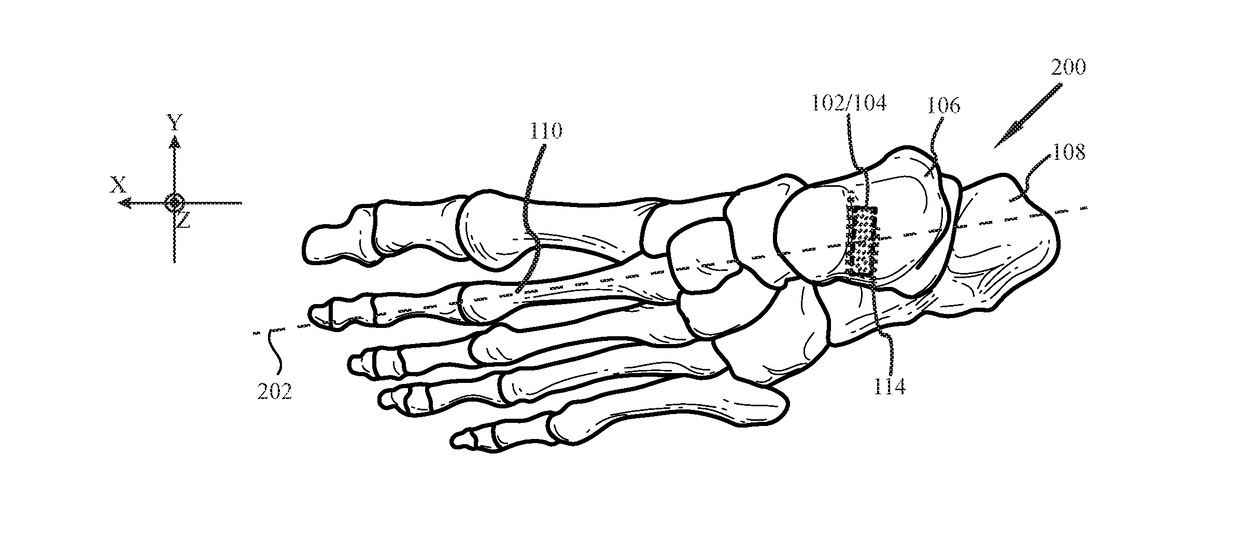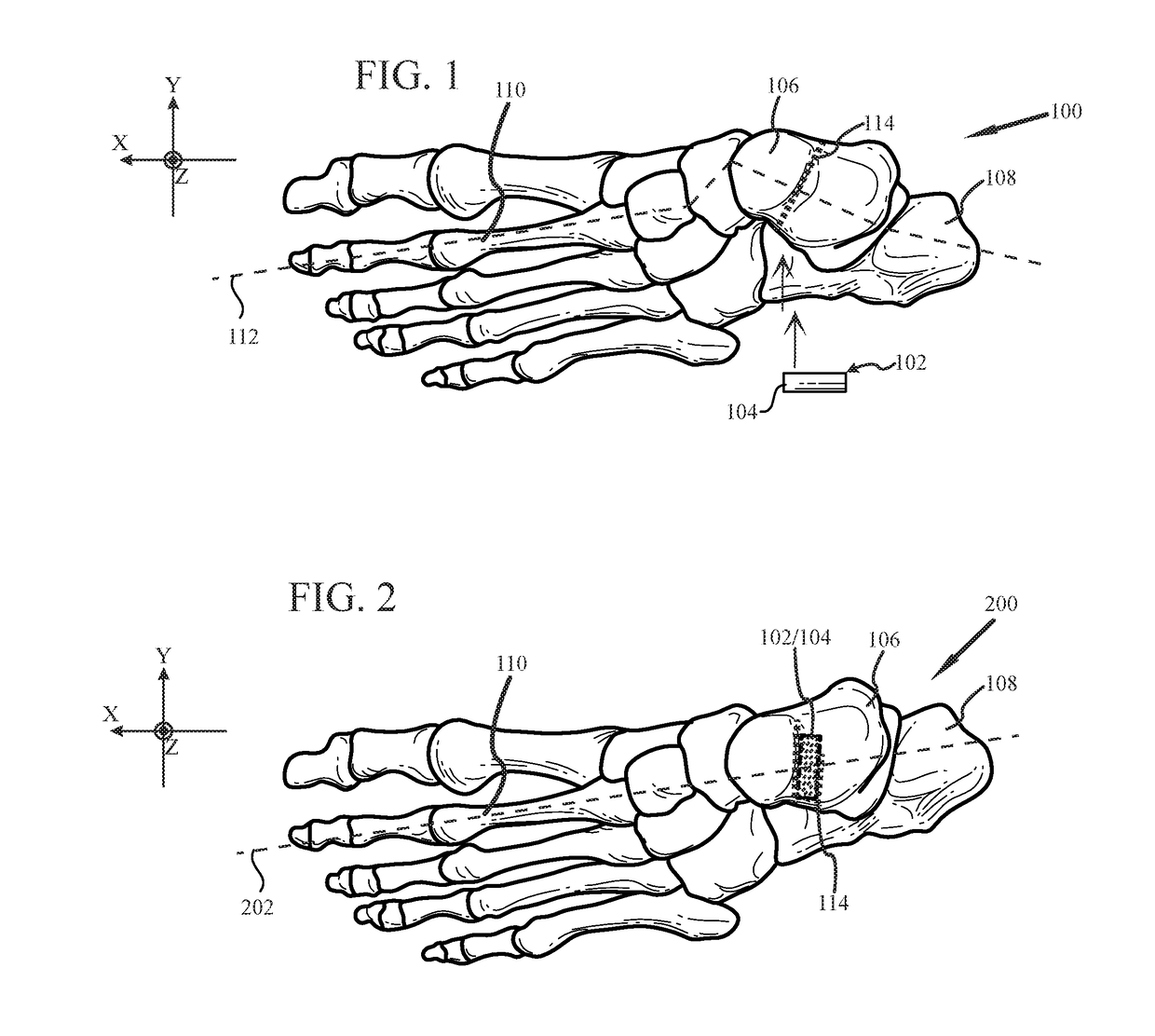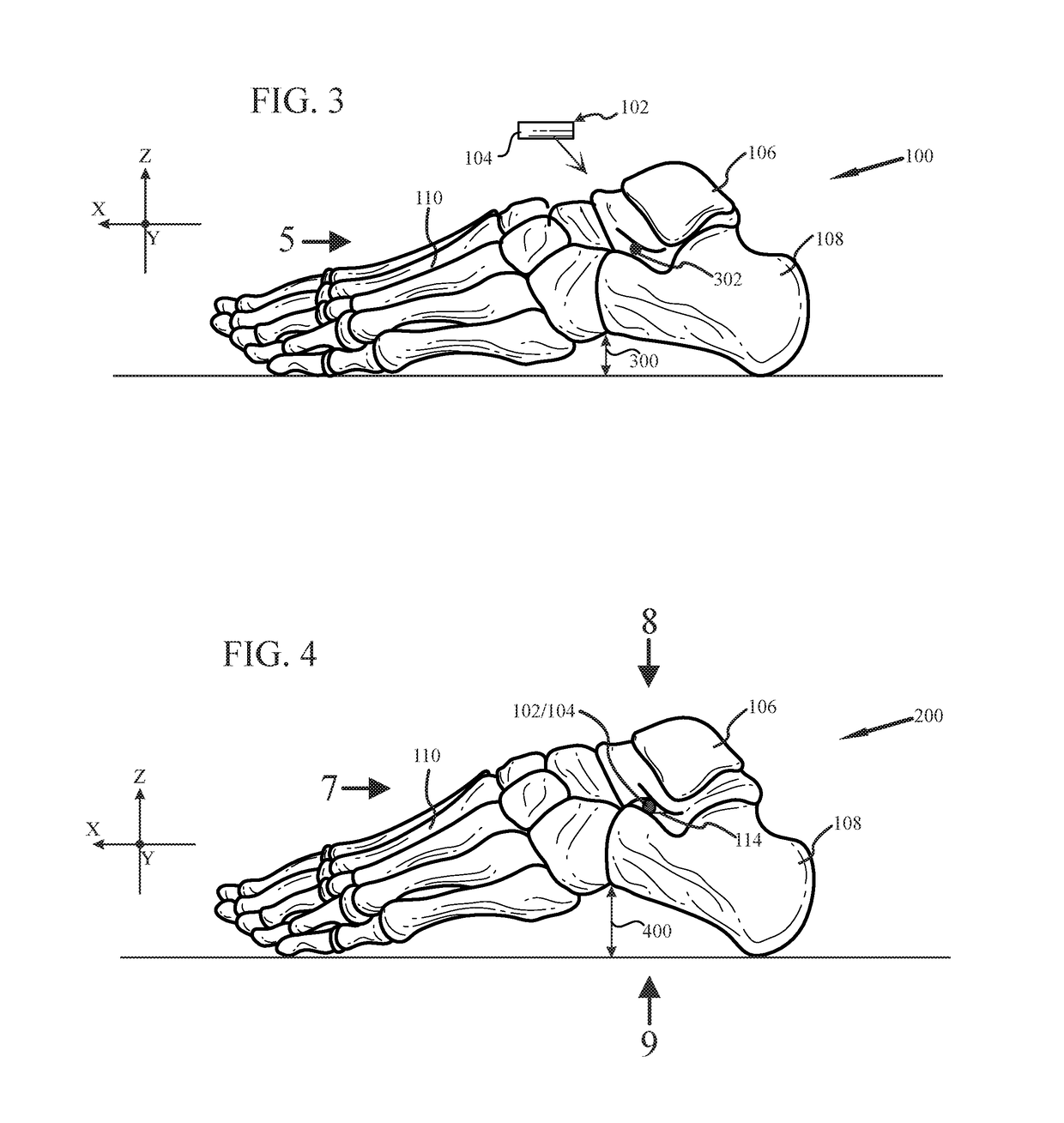System and method for non-binding allograft subtalar joint implant
a technology of allograft and subtalar joint, which is applied in the field of medical procedures, can solve the problems of abnormal translation of forces placed on the surrounding joints, hammertoes, and shin splints, and achieve the effect of reducing the tendency for abnormal motion
- Summary
- Abstract
- Description
- Claims
- Application Information
AI Technical Summary
Benefits of technology
Problems solved by technology
Method used
Image
Examples
Embodiment Construction
[0031]Our invention solves the problems of the prior art by providing novel systems and methods for a non-binding allograft subtalar joint implant
[0032]Before proceeding with the detailed description, it is to be appreciated that the present teaching is by way of example only, not by limitation. The concepts herein are not limited to use or application with a specific system or method for a non-binding allograft subtalar joint implant. Thus, although the instrumentalities described herein are for the convenience of explanation shown and described with respect to exemplary embodiments, it will be understood and appreciated that the principles herein may be applied equally in other types of systems and methods involving or pertaining to a non-binding allograft subtalar joint implant.
[0033]This invention is described with respect to preferred embodiments in the following description with reference to the Figures, in which like numbers represent the same or similar elements. Further, wi...
PUM
| Property | Measurement | Unit |
|---|---|---|
| diameter | aaaaa | aaaaa |
| diameter | aaaaa | aaaaa |
| diameter | aaaaa | aaaaa |
Abstract
Description
Claims
Application Information
 Login to View More
Login to View More - R&D
- Intellectual Property
- Life Sciences
- Materials
- Tech Scout
- Unparalleled Data Quality
- Higher Quality Content
- 60% Fewer Hallucinations
Browse by: Latest US Patents, China's latest patents, Technical Efficacy Thesaurus, Application Domain, Technology Topic, Popular Technical Reports.
© 2025 PatSnap. All rights reserved.Legal|Privacy policy|Modern Slavery Act Transparency Statement|Sitemap|About US| Contact US: help@patsnap.com



